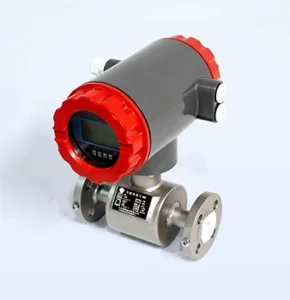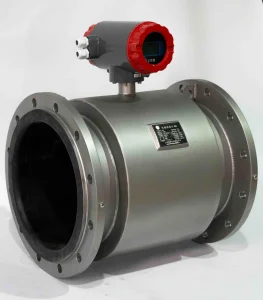مقاييس التدفق المغناطيسيالمعروفة أيضًا باسم مقاييس المغناطيس ، هي أدوات مفيدة للتحقق من سرعة تدفق السوائل الموصلة. يعملون باستخدام قانون فاراداي للحث الكهرومغناطيسي، والذي يتيح لهم القياس بسلاسة دون أجزاء متحركة. وهذا يجعلها قوية وطويلة الأمد. تحتاج هذه العدادات إلى سوائل توصل الكهرباء ، مثل مياه الصرف الصحي أو الأحماض. لا يمكنهم قياس المواد غير الموصلة مثل النفط. إعدادها بشكل صحيح ، مع أنابيب كاملة وموقف صحيح ، مهم جداً لتحقيق نتائج جيدة. لا تحتاج إلى الكثير من العناية ، ولكن أشياء مثل مواد الأنابيب أو درجة الحرارة أو الضغط يمكن أن تغير مدى عملها بشكل جيد. تتميز النماذج المختلفة بميزات خاصة ، مثل الأنواع الخطية أو خيارات البيانات ، لذلك اختر النماذج الصحيحة مقياس التدفق المغناطيسي يعتمد على سائلك وحجم الأنابيب ومكان العمل. شركات مثل تشينشو تقديم خيارات مخصصة للوظائف الصناعية، خلط السعر الجيد مع القيمة طويلة الأجل.
إذا كنت تتعامل مع أنظمة السوائل في المصانع أو المصانع ، فمن المحتمل أنك سمعت عن مقاييس التدفق المغناطيسي. هذه الأدوات معروفة لكونها موثوقة ودقيقة. ألف مقياس التدفق المغناطيسييسمى أحيانا مقياس المغناطيس أو مقياس الكهرومغناطيسي ، وهو أمر رائع لقياس سرعة تحرك السوائل في الأنابيب أو الأنابيب. أفضل جزء منهم؟ لا تتحرك القطع ، لذلك لا تتلابس بسرعة.
مقاييس التدفق المغناطيسي استخدم قانون فاراداي للحث الكهرومغناطيسي. تقول هذه القاعدة أنه عندما يتدفق السائل الذي يوصل الكهرباء عبر المجال المغناطيسي ، فإنه يصنع جهد كهربائي صغير. كلما أسرع السائل، كلما زاد الجهد. تلتقط الأقطاب الكهربائية داخل العداد هذا الجهد ، ويحوله جهاز إرسال إلى رقم يمكنك قراءته. هذه الطريقة تعطي نتائج ثابتة، بغض النظر عن ضغط السائل أو لزقته.
للحصول على قياسات صلبة، كل قطعة من مقياس التدفق المغناطيسي يحسب. يحتوي المقياس على جزئين رئيسيين: مستشعر ومرسل. يحتوي المستشعر، المتصل بالأنبوب، على أقطاب كهربائية تحدد تغيرات الجهد عندما يتدفق السائل عبر المجال المغناطيسي. المرسل ، جالس في الأعلى ، يأخذ هذه المعلومات ويجعلها إلى أرقام يمكنك استخدامها.
بدون أجزاء متحركة ، يبقى العداد دقيقًا ويستمر لفترة طويلة. هذا النقص في القطع الميكانيكية هو سبب كبير لماذا مقاييس التدفق المغناطيسي هي قوية وموثوقة.
ستجد هذه العدادات في العديد من الأماكن لأنها مفيدة للغاية. ألف مقياس التدفق المغناطيسي يعمل بشكل رائع للأنظمة ذات السوائل الموصلة ، حتى تلك ذات الموصلة المنخفضة. وهي شائعة في أماكن مثل محطات مياه الصرف الصحي ، وإعدادات التدفئة أو التبريد ، وأنظمة الري في المزارع ، وأدوات تتبع الطاقة ، والمصانع التي تحتاج إلى مراقبة السوائل بدقة.
ليس تماماً الاختلاط الكبير هو التفكير في أن هذه العدادات تعمل لجميع السوائل. إنها تعمل بشكل جيد فقط مع السوائل التي توصل الكهرباء.
ألف مقياس التدفق المغناطيسي يمكن التعامل مع العديد من السوائل ، مثل السوائل القذرة أو السميكة أو القوية ، مثل الأحماض. لكن السائل يجب أن يكون له شحنة كهربائية. إذا لم يكن لديه أيونات كافية ، مثل المياه النظيفة أو الزيت ، فإن العداد لا يستطيع قراءة الجهد. يجب أن تكون دقيقة.
تحصل على قراءات سيئة أو لا على الإطلاق. السوائل غير الموصلة لا تصنع الجهد في المجال المغناطيسي ، لذلك لا يمكن للأقطاب الكهربائية التقاط أي شيء.
بالنسبة للأنظمة ذات السوائل الموصلة، مثل مياه الصرف الصحي أو مياه التبريد، جرب أداة مثل مقياس التدفق الكهرومغناطيسي من شركة Shandong Chenshuo Instrument ، Ltd. هذه مصنوعة لمثل هذه الوظائف وتأتي في أحجام من DN15 إلى DN300 لتناسب أنابيب مختلفة.

إنها أسهل الرعاية من العدادات مع الأجزاء المتحركة ، لكنها ليست خالية من الصيانة.
بما أنه لا توجد أجزاء متحركة، فإن مقياس التدفق المغناطيسي يحتاج القليل من الاهتمام. لكن الأشياء في العالم الحقيقي، مثل القذارة أو التراكم في الأنابيب، يمكن أن تؤذي طريقة عملها مع مرور الوقت. الرعاية المنتظمة تبقيها تعمل بسلاسة.
يمكن للجسيمات الخشنة أو المواد الكيميائية القوية أن تضر ببطء بطانات المستشعر أو الأقطاب الكهربائية. حتى بدون أجزاء متحركة ، يمكن أن تجعل الإعدادات القاسية العداد يتآكل بشكل أسرع إذا لم تشاهده.
فحص سهل والتنظيف الآن ومن ثم تساعد طنا. مترات من تشينشو تم بناؤها صعبة للاستخدام الصناعي ، لكنها لا تزال تحتاج إلى صيانة منتظمة للبقاء في حالة جيدة.
لا - الموقع مهم كثيرا للنتائج الجيدة.
يمكن أن يسبب الإعداد السيئ مشاكل مثل فقاعات الهواء بالقرب من الأقطاب الكهربائية أو تدفق السوائل غير المتساوي ، مما يفوض القراءات. ضع العداد عموديا مع تدفق صعودي أو أفقيا مع أنابيب كاملة لأرقام ثابتة. مترات من أجهزة قياس GPImeters يعمل على أي حال إذا تم إعداده بشكل صحيح.
فقاعات الهواء تصنع ضوضاء تخلط بين الأقطاب الكهربائية. أيضًا ، إذا لم يكن الأنبوب مليءًا ، وخاصة في أنظمة الجاذبية ، فإن القراءات يمكن أن تقفز لأن السائل لا يلمس الأقطاب الكهربائية بالكامل.
كل مقياس التدفق الكهرومغناطيسي من تشينشو يأتي مع إرشادات واضحة. يتأكد فريق الدعم الخاص بهم من أن إعدادك يتبع أفضل الخطوات ، سواء داخل أو خارج.

إنها تعطي قراءات سريعة، ولكن لا تزال تحتاج إلى معايرتها في بعض الأحيان.
مقاييس التدفق المغناطيسي توفير نتائج سريعة دون الانتظار. ولكن المعايرة عند الإعداد وكل مرة في كثير من الأحيان يحافظ على القراءات على الفور، خاصة إذا كانت أشياء مثل تحول درجة الحرارة.
يمكن للتغيرات في درجة الحرارة أو الضغط تعديل سمات السائل ، مثل مدى توصيل الكهرباء بشكل جيد. يمكن أن يسبب تراكم الغبار في جهاز الإرسال أيضًا مشاكل مع مرور الوقت.
بعض عدادات التكنولوجيا العالية لها ميزات المعايرة التلقائية التي تعدل الإعدادات بناء على القياسات المبكرة. هذه مثالية للأنظمة التي يصعب فيها إجراء فحوصات يدوية في كثير من الأحيان.
لا طريقة - النماذج المختلفة مختلفة جدا.
تختلف المقاييس في الجودة ، مثل نوع مادة البطانة ، أو أسلوب المستشعر ، أو كيفية تعامل جهاز الإرسال مع الإشارات. حتى أن البعض لديه إضافات رائعة مثل التحقق عن بعد.
على سبيل المثال ، تحتاج مياه الصرف الصحي التي تحتوي على الكثير من المواد الصلبة إلى بطانات قوية. قد تحتاج أنظمة التبريد إلى عدادات صغيرة مع مخرجات رقمية لأنظمة البناء. اختر ما يتطابق مع الإعداد الخاص بك.
قد تستخدم العدادات منخفضة التكلفة مواد أضعف أو تفوت ميزات مثل مخرجات النبض. تشينشو يتم جعل العدادات ، من DN15 إلى DN300 ، قوية للوظائف الصناعية بأداء قوي.